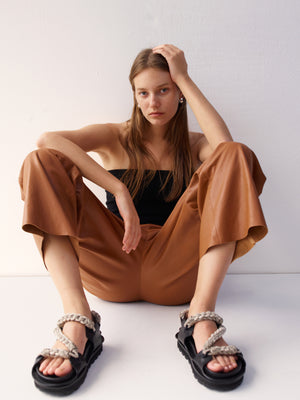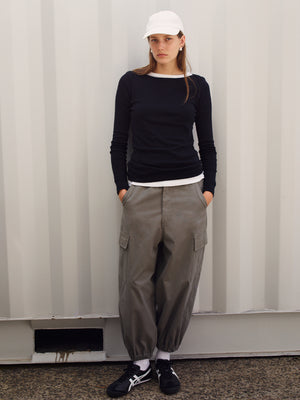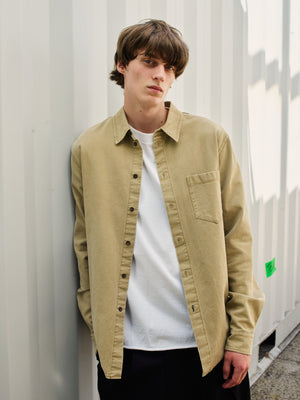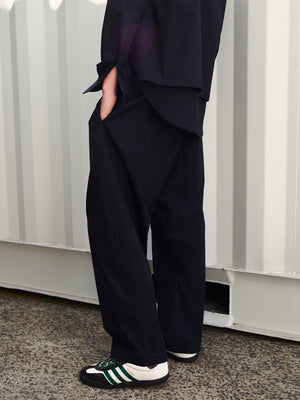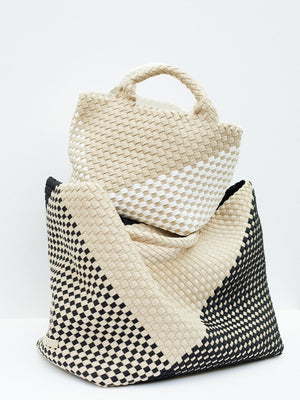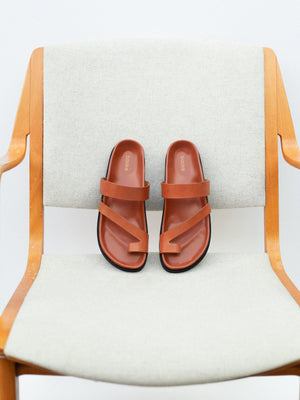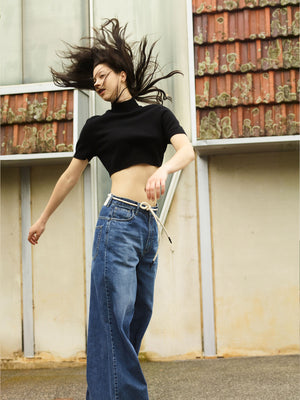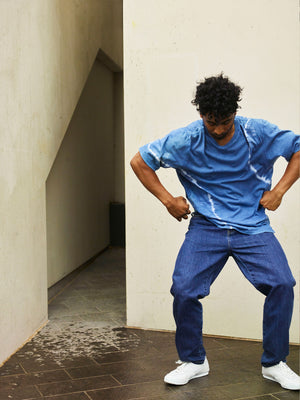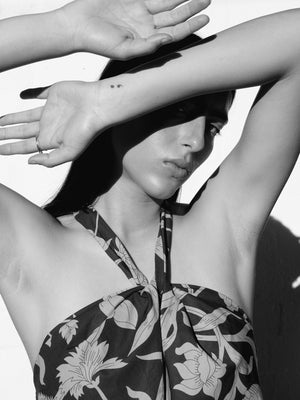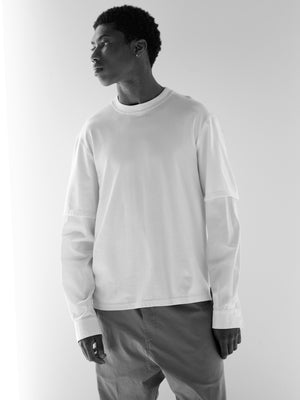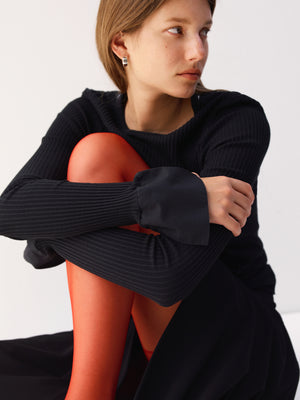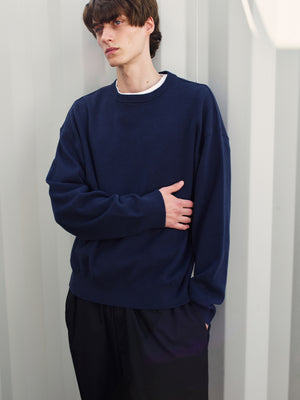Your Bag is Empty
bassike presents fukishima by miso
We are excited to be collaborating with internationally renowned artist Stanislava Pinchuk (aka Miso) to launch her third art book titled ‘Fukushima’.with a series of events across Los Angeles, Sydney and Melbourne. The edition covers Miso’s latest body of work, data mapping the topographies in the Fukushima Nuclear Exclusion Zone in Japan.
We visited Miso at her home and studio in Melbourne to talk about the book,her evolution as an artist and future plans.
tell us a little bit about the beginning of your artistic practice? Was there a specific catalyst that set you on your creative journey?
I suppose so many people say the same thing - but it’s really all from being a slightly shy kid. I think I’ve always been very reserved, but with a huge private world. Always drawing, making things, reading and writing avidly. I think I never stopped, but deciding not to go to art school - other people called me an artist before I ever did. Now that I think about it, there’s something really nice about that.
We are excited to be launching your book ‘Fukushima’ both in Australia and the U.S. can you tell us a bit about the project and how it came to life?
I suppose with my practice, what I’m really obsessed by is the way wars and conflict change the landscape. That really began working with the Ukrainian Civil War, and dealing with the shock of seeing my home invaded. And it led to a huge interest for me in Chernobyl & Fukushima - being the sites of the two biggest nuclear disasters, and both in countries that I’ve lived in. So it extended into mapping another idea of conflict that had also happened in my homes, and into mapping a very different kind of violence.
I think the name ‘Fukushima’ conjures incredibly heartbreaking and raw images in people’s minds; I wanted to know about your preconceptions of the place and how these were affirmed or challenged while spending time there?
I’ll be the first person to say that I’m still really learning how to work in conflict zones, and how to negotiate difficult places. Not just in terms of working on the ground, but also how I place that experience personally. You have to be so resilient and tough, but not lose your perceptibility and sensitivity either, you know? It’s hard, and I definitely don’t have an answer to that yet.
And even though every project has come from a pretty autobiographical place, I do research and read very intensively before I begin anything - so sometimes it’s a bit of a shock how familiar everything is. But having said that, I do have a bit of a ‘eyes open, mouth shut’ policy when on-site, and being really receptive to the things I don’t expect to see, or that challenge my expectations. And I think that’s really the role of artists in such zones, as opposed to the pressures of time and content delivery that photo-journalists or reporters often have to work to.
Which is also very much why my work looks like nothing you would associate as an image or a war or nuclear zone, none of the visual languages or aesthetics that you might expect. I think that’s when people tune out a little too. So definitely, I don’t like to re-affirm anyone’s expectations - and I try to be as conscious as I can of my own!
"
i suppose with my practice, what i’m really obsessed by is the way wars and conflict change the landscape
"
Fukushima is the third artist monograph you’ve made with La Chambre Graphique Paris, can you tell us about the process of transforming a body of work into a book?
It sounds kind of hard to believe, because I don’t know anyone that has this kind of relationship with their publisher…. but I just give Camille all my images and she has free reign! We just really get each other. I mean, we’re always swapping inspiration images, ideas, talking about a billion different things, sending each other books in the mail - so when it comes to actually collaborating, it’s just really exciting and easy. I get to Paris, we eat lots of cheese, laugh a bunch and go through everything we’ve been obsessing over and texting to each other in our dumb franglais, and make a plan. Then we split tasks, just work back and forth - and it’s done! I don’t think I’ve ever made any changes. She’s pretty magic.
In addition to your art work, you also make home-made tattoos?
Yes! It’s such a nice contrast to making really laborious, pristine studio work - to do something so messy and permanent so quickly, at the end of a studio night. And I really love making original works that my friends carry with them, that can’t be acquired by museums or collections! I really love the contrast of the two together.
We love your apartment, which also doubles as your studio… how does this space contribute to your creative practice? Do you enjoy working from home?
Yes! I’d been wanting to live and work in the same place for so long. My life is a bit mad, and I’m never really in one city very much so having one base with everything contained is actually pretty life changing! It’s made me so happy. And coming back to my mess, and my notes and references on the wall, works in progress is just so good. It’s like not skipping a beat.
"
my favourite thing between studio stretches, or projects is just flying somewhere else, walking forever
"
What do you enjoy doing outside of the studio?
My favourite thing between studio stretches, or projects is just flying somewhere else, walking forever. Reading avidly, filling up my mind in museums, forgetting that you even make anything at all. And it makes going back and starting something new in the studio so, so good.
After our series of launch events, you’re off to Scotland; what will you be doing while you are there and what else is on the cards for this year?
Yes, straight on the plane! I’m pretty lucky to have won quite a big art prize there - and a studio in the middle of the Highlands that lets me be a bit isolated for a good stretch, with the headspace and funding to develop the next projects I want to make. That’s pretty rare for an artist, and I’m feeling pretty lucky. Eyes open, mouth shut, right? Who knows what it’ll end up being!
‘Fukushima’ features full colour replicas of all paper works in the series, as well as her reference & research photographs from the ground - and an extensive interview on Miso’s practice with the artist Ian Strange, on both artists’ work within the zone at the same time, recorded in reflection in NYC.'Fukushima' is available to purchase exclusively at bassike paddington, bassike melbourne city andonline.
monochrome edit
miso photographed at her home and studio in melbourne.
view more of miso's work at m-i-s-o.com or follow her on instagram @m_i_s_o_
